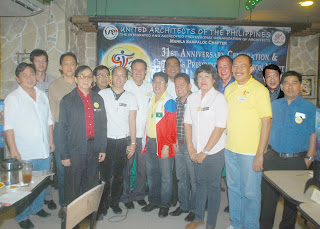Zurich/Switzerland, July 1, 2010 – The 3rd International Holcim Awards competition offering a total of USD 2 million in prize money is open to: sustainable building and civil engineering works; landscape, urban design and infrastructure projects; and materials, products and construction technologies. The Awards are an initiative of the Swiss-based Holcim Foundation for Sustainable Construction.
Entries must be submitted online at www.holcimawards.org by March 23, 2011. The competition celebrates innovative, future-oriented and tangible projects and visions from around the globe and is open to anyone involved with approaches that contribute towards a more sustainable built environment. The 3rd International Holcim Awards competition is comprised of five regional competitions in 2010/11 and the global phase in 2012. Step-by-step instructions on how to enter the competition are available at: www.holcimawards.org/guides Holcim Awards (main) and “Next Generation” (student) categories
The main category of the competition is open to architects, planners, engineers, project owners, builders and construction firms that showcase sustainable responses to technological, environmental, socioeconomic and cultural issues with contemporary building and construction. Projects are eligible for the competition if they have reached an advanced stage of design. Construction (or commercial production in the case of materials, products and construction technologies) must not have started before July 1, 2010. In addition, the Holcim Awards seeks visions and ideas for the “Next Generation” category, open to student projects created within university programs at final year bachelor level or above (including master’s and PhD).
Measuring up to “target issues” for sustainable construction
Submissions in both categories are evaluated by independent juries, using five “target issues” to define sustainable construction. Three of these align with the triple bottom line concept of balanced social, environmental and economic performance. The rest cover contextual and aesthetic impact, and innovation and transferability. For further details see: www.holcimawards.org/target Internationally renowned architects and academics in juries
The juries in the five competition regions include experts in sustainable construction, such as
Angelo Bucci (Brazil),
Raymond J. Cole (Canada),
Wowo Ding (China),
Harry Gugger (Switzerland),
Bjarke Ingels (Denmark),
Sheila Kennedy (USA),
Ashok B. Lall (India),
Winy Maas (Netherlands),
Jürgen Mayer H. (Germany),
Mohsen Mostafavi (USA),
Amer Moustafa (UAE),
Lucy Musgrave (UK),
Olivia la O’Castillo (Philippines),
Joe Osae-Addo (Ghana),
Michel Rojkind (Brazil),
Hashim Sarkis (Lebanon),
Bruno Stagno (Costa Rica),
Gunawan Tjahjono (Indonesia).
A full list of jury members is available at: www.holcimawards.org/jury Support by world-renowned technical universities
The Holcim Awards competitions are conducted in partnership with some of the world’s leading technical universities. The Swiss Federal Institute of Technology (ETH Zurich) leads the Technical Competence Center of the Holcim Foundation. Other partner universities which host the independent competition juries are: the Massachusetts Institute of Technology (MIT) in Cambridge, USA; the Universidad Iberoamericana (UIA) in Mexico City, Mexico; l’École Supérieure d’Architecture de Casablanca (EAC) in Morocco, and Tongji University (TJU) in Shanghai, China. The Universidade de São Paulo (USP), Brazil, and the University of the Witwatersrand (Wits) in Johannesburg, South Africa, are associated universities of the Holcim Foundation.
100 prize winning projects in the first two competitions
In the 2nd Holcim Awards competition 2008/2009, almost 5000 projects from 120 countries were submitted. The 52 prize-winning projects included the global winners: Holcim Awards Gold – River remediation and urban development scheme, Fez, Morocco. Silver – Low-impact greenfield university campus, Ho Chi Minh City, Vietnam. Bronze – Sustainable planning for a rural community, Beijing, China. “Innovation” prize – Self-contained day labor station, San Francisco, USA. Details about the 100 prize-winning projects from both the 1st and 2nd competition cycles are available at: www.holcimawards.org. The Holcim Foundation is supported by Holcim Ltd and its Group companies in around 70 countries and is independent of its commercial interests. Holcim is one of the world’s leading suppliers of cement and aggregates as well as further activities such as ready-mix concrete and asphalt including services. In 2009 the Group was confirmed as a member of the Dow Jones Sustainability Index for the seventh time in succession.
------------------------------------------------------------------------
5 Target Issues
To make the criteria of sustainable construction concise and transparent, the Holcim Foundation and its partner universities have defined five so-called “target issues”. These criteria consider sustainability from a holistic perspective:
Progress – Quantum change and transferability
The project must demonstrate innovation at the forefront of sustainable construction, a quantum leap in comparison to conventional procedures. Breakthroughs and trend-setting approaches, irrespective of scale, must be transferable to a range of other applications.
People – Ethical standards and social equity
The project must adhere to the highest ethical standards and support society at all stages of construction, from planning and building processes to long – term impact on the communal fabric. The project is to provide an advanced response vis-à-vis ethical and social responsibility.
Planet – Ecological quality and energy conservation
The project must exhibit a sensible use and management of natural resources throughout its life cycle, including operation and maintenance. Long-term environmental concerns, whether pertaining to flows of material or energy, should be an integral part of the built entry.
Prosperity – Economic performance and compatibility
The project must prove to be economically feasible and innovative as to the deployment of financial resources. Funding must promote an economy of means and be compatible with the demands and constraints encountered throughout the construction’s life span.
Proficiency – Contextual and aesthetic impact
The project must convey a high standard of architectural quality as to the manner in which it addresses its cultural and physical context. With space and form of utmost significance, the construction must have a lasting aesthetic impact on its surrounding environment.
-----------------------------------------------------------------------
Contact
Dominik Baumann, Communications Manager, Holcim Foundation
Holcim Foundation, Hagenholzstrasse 85, CH-8050 Zurich/Switzerland
Philippines: Jill Cortes email at: gillian.cortes@holcim.com





























































